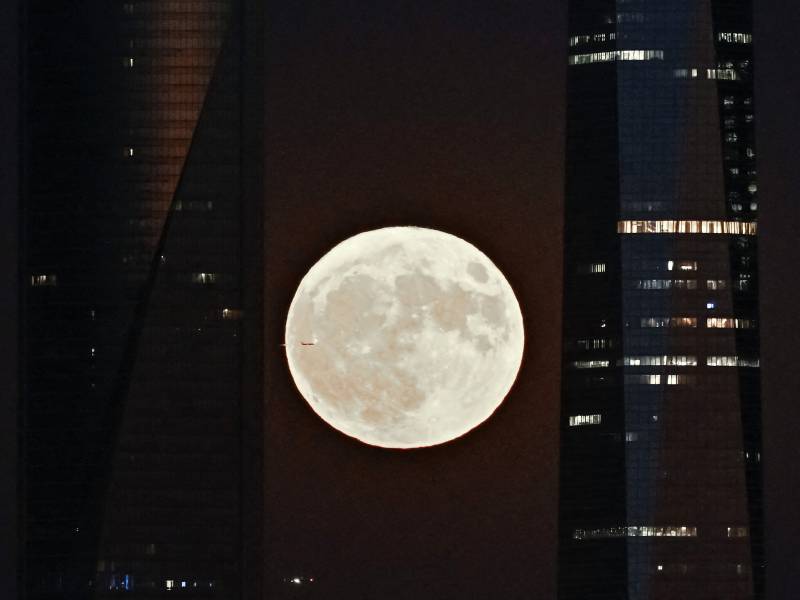A blue supermoon, however, happens far less frequently. The last blue supermoon was in December 2009, and the next one won’t be until January 2037, NASA reports.
When and where can I see it?
This year’s blue supermoon will officially turn full at 9:36 p.m. ET on Aug. 30, according to Space.com, but to the naked eye, it’ll look just as full from Tuesday night to Friday morning, with the shaded strip appearing so narrow as to be virtually imperceptible.
And, if it’s an especially big moon you’re after, consider catching the moonrise in the east or moonset in the west. Experts say this is when foreground objects combine with a low-hanging moon to create the “moon illusion” — the time when the moon tends to look the largest.
(You can check the local rising and setting times for your area using the U.S. Navy’s Moonrise calendar).
Anyone looking to take in more detail of the lunar surface could use binoculars, a telescope, or an astrophotography lens. But astronomers like Teske say those tools aren’t necessary for a moving experience.
“Get out there and observe it. Just enjoy the beautiful view of the moon,” he said. “Really think about what you’re seeing out there.”
After all, this isn’t just a hunk of rock orbiting the Earth about a quarter of a million miles away. It could be the next frontier.
Just in the last week, the Indian Space Agency successfully landed a spacecraft on the moon’s south pole, where frozen water craters could fuel future missions. Japan’s space agency, JAXA, nearly launched a moon lander (but postponed the moonshot due to strong winds).
And the private company SpaceX paired with NASA to dock a crew of astronauts at the International Space Station, in order to perform experiments that might one day make it easier to travel to the moon and back.
“We’re doing things with the moon now that are building this slow and steady public interest,” said Noah Petro, a research scientist with NASA’s Goddard Space Flight Center.
Petro said that the value of supermoons like these is that they “allow us to take a moment and revel, and enjoy that nearest neighbor and space.”
“It’s not so far away that we can’t see it. It’s effectively right there in our backyard,” he added.
One note of caution: This moon could bring an elevated risk for flooding
But those looking to observe the moon from a beach should consider checking conditions first.
The close proximity of the moon means that for several days this week, the range of tides will be greater than normal.
The moon will exert 48% more tidal force during the spring tides of Aug. 30 compared with two weeks earlier, according to Space.com. Higher tides could get more high, which could cause some coastal flooding.
That risk will be especially heightened along the gulf coast of Florida, where Hurricane Idalia is expected to make landfall early Wednesday.

9(MDAxOTAwOTE4MDEyMTkxMDAzNjczZDljZA004))
